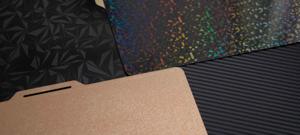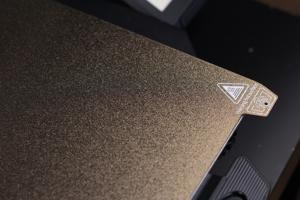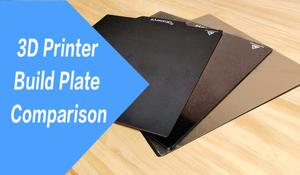Content Menu
● Understanding Aluminum Extrusion
● Benefits of Using an Aluminum Extrusion Bed Frame
● Design Features of Aluminum Extrusion Bed Frames
● Installation and Setup
● Maintenance Tips
● Performance Considerations
>> 1. Print Quality
>> 2. Material Compatibility
>> 3. Temperature Management
● Cost-Effectiveness
● Community Support and Resources
● Conclusion
● FAQ
>> 1. What are the main benefits of using an aluminum extrusion bed frame?
>> 2. Can I customize my aluminum extrusion bed frame?
>> 3. How do I maintain my aluminum extrusion bed frame?
>> 4. Is it difficult to install an aluminum extrusion bed frame?
>> 5. What types of print surfaces work best with aluminum extrusion frames?
In the world of 3D printing, the choice of components can significantly impact the quality and efficiency of your prints. One of the most crucial elements is the bed frame, and aluminum extrusion bed frames have gained popularity for various reasons. This article will explore the advantages of using aluminum extrusion bed frames for 3D printers, delve into their features, and provide insights into why they might be the best choice for your printing needs.

Understanding Aluminum Extrusion
What is Aluminum Extrusion?
Aluminum extrusion is a manufacturing process that involves shaping aluminum alloy into a desired cross-sectional profile. This process allows for the creation of lightweight, strong, and versatile components that can be used in various applications, including 3D printer frames.
Advantages of Aluminum Extrusion
- Strength and Durability: Aluminum is known for its high strength-to-weight ratio, making it an ideal material for 3D printer frames.
- Corrosion Resistance: Aluminum naturally forms a protective oxide layer, which helps resist corrosion.
- Lightweight: Compared to steel or other metals, aluminum is significantly lighter, facilitating easier handling and assembly.
- Versatility: Aluminum extrusions can be easily cut to size and configured in numerous ways to meet specific design requirements.
Benefits of Using an Aluminum Extrusion Bed Frame
1. Enhanced Stability
An aluminum extrusion bed frame provides superior stability compared to traditional wooden or plastic frames. The rigidity of aluminum ensures that the printer remains level during operation, which is essential for achieving high-quality prints. This stability minimizes vibrations that can lead to print defects.
2. Improved Heat Distribution
Aluminum has excellent thermal conductivity, which means it can evenly distribute heat across the bed surface. This characteristic is particularly beneficial when printing with materials that require consistent heating to prevent warping, such as ABS or PETG.
3. Customizability
One of the standout features of aluminum extrusion bed frames is their customizability. Users can modify their frames to fit specific printer models or personal preferences. For instance, additional mounting points can be added for accessories like filament holders or lighting.
Design Features of Aluminum Extrusion Bed Frames
1. Modular Design
Aluminum extrusion systems are modular, allowing users to expand or modify their setups easily. This modularity means that if you decide to upgrade your printer or change its configuration, you can do so without needing to replace the entire frame.
2. T-Slot Design
The T-slot design of aluminum extrusions allows for easy attachment of various components using brackets and fasteners. This feature simplifies the process of adding accessories or making adjustments to your printer setup.
3. Aesthetic Appeal
Aluminum frames offer a sleek and modern appearance that many users find appealing. The clean lines and metallic finish can enhance the overall look of your 3D printing setup.
Installation and Setup
Installing an aluminum extrusion bed frame is relatively straightforward due to its modular nature. Here's a simple guide:
1. Gather Your Tools: You'll need basic tools such as an Allen wrench set and a screwdriver.
2. Cut the Extrusions: Depending on your printer's specifications, cut the aluminum extrusions to size.
3. Assemble the Frame: Use corner brackets to connect the extrusions at right angles, ensuring everything is square.
4. Attach the Bed Surface: Securely attach your chosen print surface (glass, PEI sheet, etc.) to the aluminum frame.
5. Level the Bed: Ensure that the print bed is level before starting your first print.

Maintenance Tips
To keep your aluminum extrusion bed frame in top condition:
- Regularly Check for Loose Screws: As with any mechanical assembly, screws may loosen over time due to vibrations.
- Clean Regularly: Dust and debris can accumulate on both the frame and print surface; regular cleaning will help maintain print quality.
- Inspect for Wear: Periodically check for signs of wear or damage on both the frame and any attached components.
Performance Considerations
When choosing an aluminum extrusion bed frame, consider how it will affect your printing performance:
1. Print Quality
The rigidity provided by an aluminum extrusion bed frame contributes significantly to print quality. A stable base reduces vibrations during printing, leading to cleaner layers and better adhesion between them.
2. Material Compatibility
Different materials have varying thermal requirements during printing. An aluminum extrusion bed frame's ability to maintain consistent heat across its surface makes it suitable for a wide range of filament types, including PLA, ABS, PETG, and more specialized materials like nylon.
3. Temperature Management
For advanced users who employ heated beds, an aluminum extrusion frame can enhance temperature management by providing a solid foundation that supports efficient heat distribution across the build surface.
Cost-Effectiveness
While some may perceive aluminum extrusion bed frames as more expensive than traditional materials like wood or plastic, their long-term benefits often outweigh initial costs:
- Longevity: Aluminum's durability means less frequent replacements compared to wooden frames that may warp over time.
- Reduced Maintenance Costs: The corrosion resistance of aluminum reduces maintenance costs associated with rust or decay.
Community Support and Resources
Another significant advantage of using aluminum extrusion bed frames is the wealth of community support available:
- Online Forums and Groups: Many online communities focus on 3D printing where users share their experiences with different setups, including those using aluminum extrusions.
- Tutorials and Guides: Numerous resources exist online that provide step-by-step guides on building custom frames using aluminum extrusions.
- Parts Availability: The popularity of aluminum extrusions means that parts are readily available from multiple suppliers at competitive prices.
Conclusion
Choosing an aluminum extrusion bed frame for your 3D printer offers numerous advantages, including enhanced stability, improved heat distribution, customizability, and durability. Its modular design allows users to adapt their setups easily while maintaining aesthetic appeal. Whether you're a hobbyist or a professional looking to improve your printing experience, investing in an aluminum extrusion bed frame could be one of the best decisions you make.

FAQ
1. What are the main benefits of using an aluminum extrusion bed frame?
Aluminum extrusion bed frames provide enhanced stability, improved heat distribution, customizability, and durability compared to traditional materials.
2. Can I customize my aluminum extrusion bed frame?
Yes! The modular design allows for easy customization and expansion based on individual needs or preferences.
3. How do I maintain my aluminum extrusion bed frame?
Regularly check for loose screws, clean dust from surfaces, and inspect for wear or damage to ensure optimal performance.
4. Is it difficult to install an aluminum extrusion bed frame?
No, installation is relatively straightforward with basic tools; follow assembly instructions carefully for best results.
5. What types of print surfaces work best with aluminum extrusion frames?
Common options include glass sheets, PEI sheets, and magnetic flexible build plates; each has its unique benefits depending on your printing materials.






















